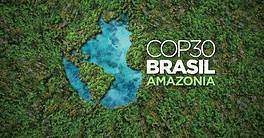Corporate leaders are grappling with an explosion of ESG ratings, rankings and grades.

A focus on environmental, social and governance (ESG) considerations—in policy, in investing, in corporate planning—is undeniably one of the new century’s global megatrends. Each successive disaster in recent decades, from catastrophic storms, droughts and floods to tidal waves, die-offs and new contagions, has added to the growing awareness of the need to incorporate factors beyond the bottom line.
It is truly a global phenomenon. In Asia Pacific, 79% of investors surveyed in late 2020 by MSCI say they “would increase ESG investment either significantly or moderately as a response to Covid-19,” about the same as in the US (78%) and higher than in Europe, the Middle East and Africa (68%). A generation of new consumers and workers is increasingly attuned to corporate ethics.
One result is a snowballing effort to nail down sustainability metrics. In the past decade the number of ESG ratings agencies—the research firms that grade and rank corporate sustainability performance—have proliferated dramatically. As of 2019, there were more than a hundred organizations producing “lists, rankings, ratings, and scorecards of the ‘top companies’ and ‘most sustainable’ companies,” according to sustainability consultancy ERM.
The sudden proliferation of raters and ratings has corporate leaders in knots. Mike Wallace, partner at ERM, says his clients, bombarded with requests for their sustainability data, plead for help: “‘What about this one?’ they ask. ‘Should I be on this list?’ It takes an entire hour to go through and explain which are important.”
Aside from the sheer number of raters, there are complaints that their methodologies are opaque—many hold them close as a trade secret—their definitions and data inputs inconsistent. Certainly, the great variation among agencies as to which are the top corporate citizens suggests the lack of consensus on methodologies and metrics.
“It’s a mess, a noodle soup,” says Shivaram Rajgopal, the Kester and Byrnes Professor of Accounting and Auditing at Columbia Business School.
Admittedly, rating firms have a tough assignment. “Somebody has to define what are good and bad ESG outcomes,” says Ingo Walter, professor emeritus of finance at New York University’s Stern School of Business. “Otherwise you can’t make judgments, let alone create metrics.”
The Case of J.P. Morgan
A case in point involves J.P. Morgan, which was downgraded one notch, from “adequate” to “noncompliant,” by UK-based sustainability rating agency Standard Ethics (part-owned by Global Finance’s parent, Italy’s Class Editori) for backing the attempt by 12 football (soccer) clubs to leave the Union of European Football Associations and form a new group called European Super League. The breakaway attempt was widely opposed: Boris Johnson threatened to legislate against it.
Standard Ethics, whose ratings are based in part on a company’s alignment with standards set by major international agencies, made the case that J.P. Morgan acted contrary to best practices as defined by the UN, OECD and EU by failing to take into account the interests of all stakeholders, specifically stakeholders in the incumbent European football system. Announcing the downgrade, the company cited Italian Prime Minister Mario Draghi, who decried the plan as counter to “meritocratic values and the social function of sport.” Ultimately, the project failed.
Yet other ESG raters ignored the debacle. Sustainalytics, a large Netherlands-based ESG ratings firm, has maintained J.P. Morgan at the “medium” ESG risk rating that it held before, a spokesperson says. It certainly seems like subjective judgements are involved here. And it’s not limited to corporate ratings.
“Two ESG rating agencies may say completely different things about the same [bond] issuer,” Pat Welch, chief ESG and ratings policy officer at Kroll Bond Rating Agency (KBRA), complained in a recent podcast. Part of this is due to the “natural subjectivity of ESG issues,” he explains to Global Finance: “What I define as ‘sustainable’ may not match your definition. Is upgrading a coal plant to make it more energy efficient ‘sustainable’? What if it cuts that plant’s CO2 emissions in half? What if the upgrade takes 30 years?”
In the oft-cited academic paper “Aggregate Confusion: The Divergence of ESG Ratings,” Julian Kölbel, an economist and environmental scientist at the University of Zurich’s Center for Sustainable Finance and Private Wealth, and his co-authors note substantial disagreement between the leading ESG rating agencies—a moderate correlation of 0.54 on average. “It’s hard to understand where differences [between ratings] come from,” Kölbel says.
Credit rating assessments from Moody’s and Standard & Poor’s, by contrast, agree almost all the time—a correlation of 0.99 in a 2019 MIT Sloan School of Management study. Credit raters have it easy compared to ESG raters. All they have to figure out—more or less—is the likelihood of debt service “on time and in full,” says NYU’s Walter.
Richard Barker, professor of accounting at University of Oxford’s Saïd Business School, points out that “the ‘E,’ the ‘S’ and the ‘G’ are quite different from one another, [so] attempting an overall aggregation of those three things is a pretty big ask.” There can also be overlap among E, S and G. Barker asks if gender diversity as it pertains to corporate boards is a social issue or a governance issue. Maybe it’s both.
One result: Wallace says corporate clients are sometimes baffled by their grades. “‘I don’t get what [the rating agencies] are asking for,’ they say. ‘I keep getting these weird scores each year.’”
As ESG goes global, it introduces more cultural variability, too. Every S&P 500 corporate board now has at least one woman director; but how does this play out in countries dominated by family-owned firms? The government of India, for one example, mandated that every corporate board contain at least one female director; but the rule can be easily finessed: Company owners simply appoint a compliant daughter or other female relative to serve, Columbia’s Rajgopal says. Yet a Harvard Business Review study found that women directors appointed in response to the rule at most Indian companies with all-male boards (70%) were in fact independent outsiders, not family members.
In part, different ratings arise from a different focus within the ESG framework. “One agency may prioritize emissions and another may prioritize employee satisfaction,” says Colleen Honigsberg, associate professor of law at Stanford Law School.
There’s an argument to be made that such diversity of approaches is healthy. The belief at Sustainalytics, for example, is that “a one-size-fits-all scenario for ESG ratings runs counter to ensuring vibrant and innovative markets,” according to a spokesperson.
Chris Fidler, CFA Institute’s senior director of global industry standards, says ratings agencies “should publish information about their methodology, so that consumers of the ratings can determine if a particular rating system is appropriate for their needs and preferences.”
Standard Ethics, for its part, holds that one critical and often overlooked element impacting assessements is the business model. Frequently, ESG ratings are made by firms that also offer consulting or data services, for example, or are paid by investors, who may have a different set of priorities. Standard Ethics is paid by applicants seeking to benchmark themselves, which keeps the analysis focused on the company.
A Role for Government
Public policymakers are no less aware of ESG issues than corporate leaders, with both voluntary and mandatory initiatives emerging. Many governments are building on frameworks such as UN Sustainable Development Goals, launched in 2015, and creating new departments and teams to focus on these issues.
“A regulatory framework that clarifies a basis of mandatory disclosure” would be a good start, says Kölbel. Along these lines, the EU’s new Sustainable Finance Disclosure Regulation, which came into force in March and requires asset managers and financial advisers to make extensive new ESG disclosures, could be seen as a step in the right direction.
In March, the US Securities and Exchange Commission (SEC) created the Climate and ESG Task Force in its Division of Enforcement, which “may play a role in bringing some consistency and comparability to the world of ESG,” says KBRA’s Welch. “Investors are demanding more and better information on ESG,” he adds, “and it’s clear that the SEC is trying to meet some of this demand.” There are indications that the Biden administration is highly focused on climate risk.
“Some sort of governmental oversight of ESG reporting is coming,” predicts Honigsberg. She is “cautiously optimistic” that this will be good for the sustainability movement generally, with reservations that it might drive some public companies to go private.
Yet a government role per se may not be necessary, Barker believes, as long as there is “some consensus, some agreed-upon standard.” Certainly, many companies have moved ahead with greater voluntary disclosure. In 2020, 77% of the Fortune 100 described ESG-related initiatives and commitments in proxy statements, according to a report by the Harvard Law School Forum on Corporate Governance—though such information remains unaudited.
Consolidation Ahead
Some consolidation is already under way, with boutique ESG research firms absorbed by larger companies, including major credit rating agencies, reports Wallace. RobecoSAM, for instance, was acquired by S&P; Vigeo Eiris was purchased by Moody’s and rebranded as V.E; and Sustainalytics is now a Morningstar company. Meanwhile, “Moody’s and S&P are both creating ESG teams on the credit rating side,” Wallace says.
“I think investors would welcome [more] streamlining of ESG ratings firms,” says Lauren Kashmanian, senior portfolio manager at Parametric Portfolio Associates. “This could happen as the industry moves toward standardization of reporting requirements.”
“I expect maybe five to six global players to survive,” says NYU’s Walter. These would probably be firms with “deep pockets,” like research firms acquired by major credit rating agencies, the London Stock Exchange (which acquired Refinitiv in 2021) and Bloomberg.
Already CDP (formerly the Carbon Disclosure Project), Sustainalytics, RobecoSam and MSCI are emerging as key contenders. These four were deemed most useful in a 2019 ERM survey of ESG experts, and subsequently also picked as the top four in the company’s 2020 survey of investors.
“Benchmark Yourself”
In the meantime, what does a CFO or institutional investor do when it comes to assessing a company’s ESG performance? Use several ratings firms? A single one? None at all?
“You can benchmark yourself,” Wallace suggests, by using data from a Bloomberg terminal. It’s the “rawest ESG data available” he says, covering some 11,800 companies, with 2,000 fields on sustainability that include scores from multiple ESG research firms, among them RobecoSAM, Sustainalytics, ISS and CDP.
Enforcement agencies, both state and federal (e.g., OSHA, EPA, etc.), that regularly publish data about corporate violations, citations, fines, etc., can also be a good source for assessing environmental and social responsibility, notes Rajgopal. “These are reasonably objective, and you can aggregate this information yourself,” he says.
Infrastructure, too, is still wanting. “For financial reporting, we have an entire infrastructure designed to induce high-quality reporting—e.g., accounting software, internal audit, internal controls, external audit, audit committees etc.—and we still have restatements,” says Stanford’s Honigsberg. “We don’t have parallel processes in place for ESG data yet, so I think it’s unreasonable to expect the data to be reliable.”
Corporate leaders—and CFOs in particular—are beginning to engage with ESG as never before. In December 2019, the UN launched the UN Global Compact CFO Task Force, a two-year project to develop meaningful metrics with input from a range of stakeholders, but most particularly by finance executives. Last year, the group released four principles for integrating sustainable development in corporate investments and finance. This summer, the group followed up with a set of key peformance indicators (KPIs) to measure their progress towards the UN SDGs.
And there will be technology to help, too. Announced in mid-July, “Microsoft Cloud for Sustainability,” is just among the latest entrants in greentech. It’s a service that speaks to the “E” in ESG by helping measure and manage corporate carbon emissions, and so new it’s still “in preview,” according to the company. Salesforce already has a similar offering.
“This [ratings] market has gotten very mature in an incredibly short period of time,” says ERMs’ Wallace, yet in many ways it remains “the wild, wild West.”
Still, with so many people working on the puzzle of quantifying ESG, new tools are developed and new understanding reached every day. Until we find persuasive answers, “anything that would help address the issues of opacity, subjectivity and the oversimplification of ESG,” Welch says, “would be beneficial to the market.”



